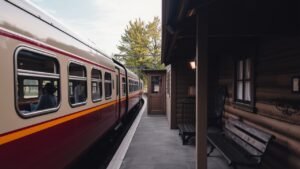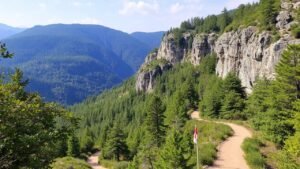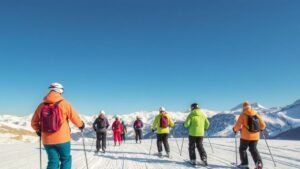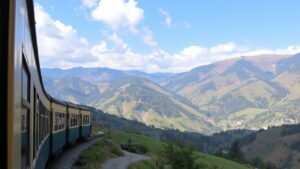The Swiss Alps are more than just mountains – they are a work of art that draws adventurers from around the globe. With their high glaciated peaks, sparkling alpine lakes, flower-filled meadows, and storybook villages, the Swiss Alps provide some of the most inviting and magnificent walking routes on Earth. There is something for everyone at whatever level of adventure, so whether you’re an experienced mountaineer or a novice hiker, the hiking tours in the Swiss Alps have an adventure for you.
In this guide, we’ll take you on a tour of the best trekking routes, offer some valuable planning tips for your Swiss Alps adventure, and provide an introduction to the destinations, culture, and natural attractions that make this region so unique. Whether you are thinking about a short hike or an extended multi-day trek, you will have a great time.
Why Trek the Swiss Alps?
Switzerland is known for its stunning landscapes, and the Alps are no exception. The beauty alone is worth a trip, not to mention the vast variety of tours available and the rich local culture. But what makes hiking in the Swiss Alps a once-in-a-lifetime experience is the stunning traverse of the region.
Stunning Scenery
To those who revere jaw-dropping landscapes, the Swiss Alps, especially the Lauterbrunnen valley, are a playground filled with alpine meadows. From the soaring heights of the Matterhorn and Mont Blanc to lush valleys exploding with alpine wildflowers, each step of the trail introduces a new vista on the traverse through the Swiss Alps. Whether you’re hiking past a glacier or peering down into an impossibly clear alpine lake in Lauterbrunnen, the views will take your breath away.
Lots of Different Trails to Cruise on for All Experience Levels
The great thing about hiking in the Swiss Alps is that it caters to all sorts of walkers. Whether you’re after an easygoing day hike or an epic multi-day adventure, the Swiss Alps have something for hikers of all levels. There are easy family-friendly trails, moderate multi-day trek,s and challenging paths that will test the most seasoned of trekkers.
Immersive Cultural Experience
It’s not just about nature — it’s about the culture of the region, too, when trekking in the Swiss Alps. The Swiss are known for their hospitality, and even their alpine villages, like Mürren, are steeped in history and tradition. You will have the opportunity to eat delicious Swiss food, to meet amiable locals, and to experience Switzerland’s alpine way of life.
Accessibility and Infrastructure
With its extensive network of public transport, well-marked paths, and variety of places to stay, which can range from simple mountain huts to luxury hotels, Switzerland is an easily accessible country. Because of the accessibility of so many hiking routes, the Swiss Alps are suitable for trekkers of every level of experience.
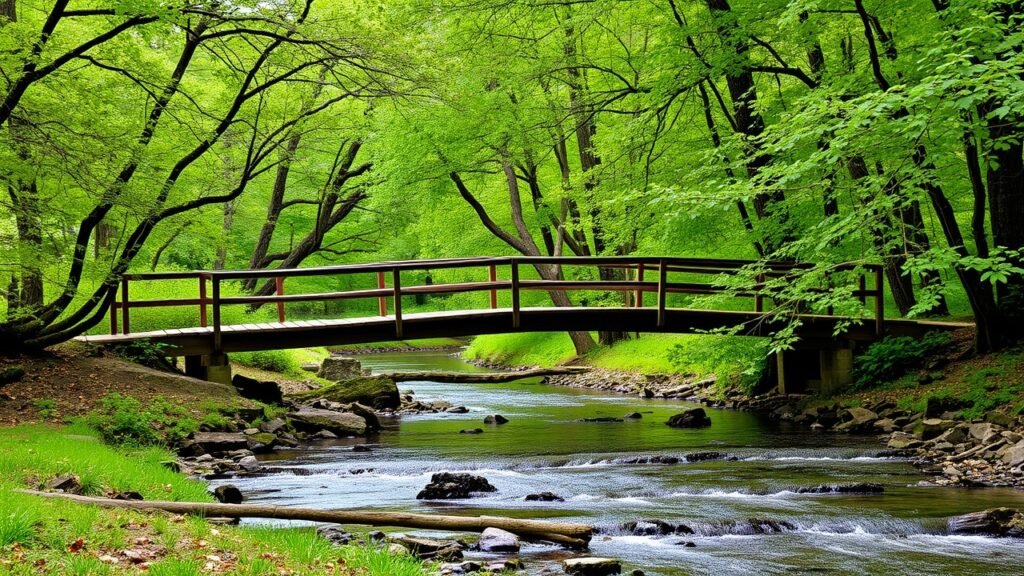
Famous Trekking Routes of the Swiss Alps
In the Swiss Alps, some of the world’s most iconic trekking routes are to be found, which provide one-of-a-kind challenges and some of the most stunning scenery. Let’s jump straight into some of the major trekking trails which I reckon you should not miss.
Haute Route Switzerland Trekking
One of the world’s most renowned and sought-after treks, the Haute Route goes from Chamonix in France to Zermatt in Switzerland, spanning over 180 kilometers and 12 days of trekking. This high-altitude route leads trekkers over glaciers, through rock-strewn valleys, and up close to some of the superstar peaks: Mont Blanc, the Matterhorn, and others. It’s a hard hike that demands good physical condition and some mountaineering skills, but with the stunning views and sense of forward momentu,m it becomes worth every step.
Matterhorn Glacier Trail Trekking
If you’re in the Zermatt area, don’t miss the Matterhorn Glacier Trail as a hike to do, and consider taking a cable car for stunning views. This 6km hike gets you up close to the iconic Matterhorn Peak, with incredible views of glaciers, alpine lakes, and the picturesque mountains to boot. It’s a moderate-level trail, which means you can do it unless you have mobility issues, but it’s the views that will be its real showstopping factor. Do not forget your camera, for the scenic views of the Matterhorn from a different angle, especially along the hiking trail that leads to the Tour du Mont Blanc.
Eiger Trail Switzerland
The Eiger Trail is a well-known hike that winds along the north face of the Eiger Mountain, one of the most renowned peaks in the Swiss Alps. This 6-hour hike is not for the faint of heart, with steep climbs and rugged ground. But it is also one of the most spectacularly rewarding in the Alps. Bordering the mighty Eiger and its neighboring mountain summits, the trail provides close-up perspectives and an unforgettable adventure for experienced trekkers.
Through the Swiss Alps on the Via Alpina Trek
The Via Alpina -for the true cross-country trekking spirit. The long-distance route covers the entire length of Switzerland from east to west, travelling through charming towns, lush valleys, and rocky mountain peaks. The complete Via Alpina route is over 350 kilometers long, and while it takes several weeks to hike in its entirety, shorter segments of the trail give jaw-dropping vistas and a taste of the Alps’ immensity.
Rwenzori Trail: The Hidden Trail in the Mountains
If you want something a little less crowded and a bit more off the beaten track, consider the Rwenzori Trail. This is a quieter part of the Swiss Alps, offering a more remote trek along the mountain trails. And it leads through deep woods, along rushing rivers, and over the hill and dale of the mountains. Lacking such a crowd, it is great for trekkers who like to be in the outdoors and the silence of the mountain.
When to hike in the Swiss Alps
Time is everything when you hike the mountain trails of the Swiss Alps. Weather in the mountains can change quickly, and some routes might be closed depending on when you visit, especially during the descent from higher altitudes. Here’s what the best times are to hike, based on the season.
Summer (June – September)
Summer is the best time for trekking in the Swiss Alps, especially on the trails leading to the Tour du Mont Blanc. The majority of the trekking paths in the Bernese Oberland are accessible, the weather is relatively warm and dry, and the trails are not very crowded, making them perfect for a hike in Switzerland. Popular trails, especially, will see more tourists, but with the long days and great conditions in Wengen, summer is the prime season for most routes.
Autumn (October)
The Swiss Alps are a magical place for a trek in the autumn. The crimson, yellow, and orange leaves blanket the countryside, creating a picturesque scene perfect for autumn hiking in the Swiss mountains. The temperature is still comfortable, but the trails are less full, thus you can more fully appreciate the tranquil beauty of the mountains. It is also a time to take in the last of summer before winter’s chill arrives.
Winter (December – March)
Winter is ski season, but these mountains are also ideal for snowshoe trekking or winter hiking along lower-altitude trails. But lots of higher-altitude trails are going to be closed for snow and ice and generally it is just harder for hiking conditions.
Spring (April – May)
Spring is a time of transition in the Swiss Alps, as the alpine meadows begin to bloom. The snow melt starts, and the wildflowers begin. It’s a great time for lower-altitude hikes and for all of the butterflies who want to steer clear of the summer hordes. But many of the higher-altitude trails in the Jungfrau region will still be snow-bound.
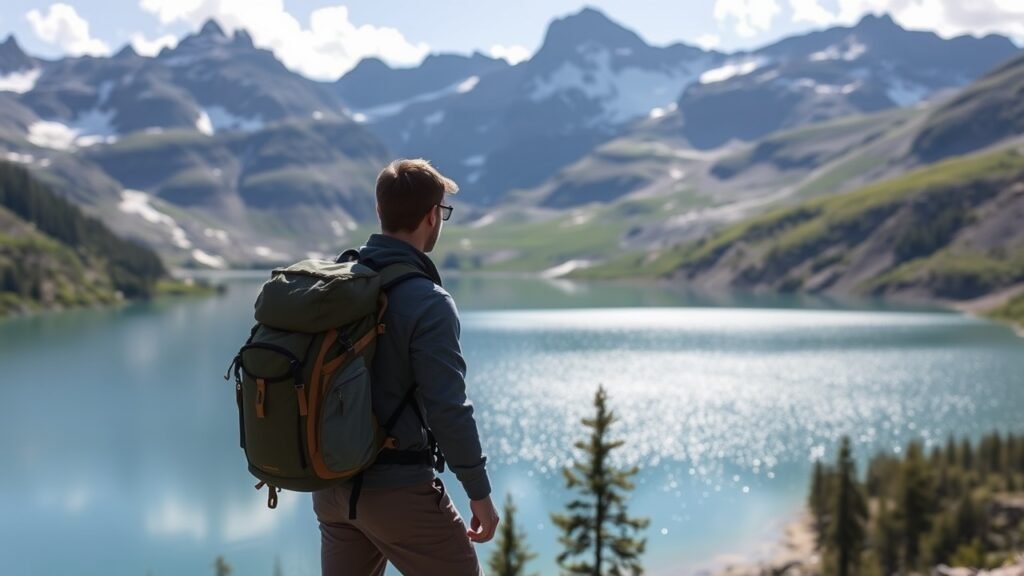
What to Take for Trekking in the Swiss Alps
Packing for treks in the Alps calls for some discipline because conditions can be so drastically different based on the time of year, elevation, and whether you are starting from Geneva or Zurich. This is what you’ll need to bring to stay safe and have a good time:
Clothing
In the Swiss Alps, layering is optimal, since the weather is unpredictable, especially during the ascent to higher altitudes, making it essential for a successful hike in Switzerland. Carry a variety of light base layers that wick away moisture, insulated outer layers for warmth, and protective waterproof layers against rain and wind. More rugged terrain in the Swiss Alps also requires a good pair of hiking boots that can provide ankle support while you’re hiking the trails of the Jungfrau region.
Gear
Trekking poles are essential for balance and stability in the snow, on the trail, and especially on rocky and steep paths.
Food & Hydration
Carry plenty of water to keep hydrated – you dehydrate fast in alpine conditions. High-energy snacks such as nuts, energy bars, and dried fruit will give you the fuel to keep going through the day.
Safety Equipment
Don’t forget to pack an emergency whistle, emergency blanket, and multitool (or knife) for the unexpected during your hiking tours. You might also find a phone or camera power bank useful on longer hikes, especially if you plan to capture the beauty of the Bernese Oberland and the alpine meadows.
Swiss Alps Trekkers Accommodation. There are a few accommodation options in Miage, 1580m, accessible for overnight guests.
Whether you want a basic mountain hut or a five-star luxury hotel, there is a hostelry to suit every taste and pocket in the Swiss Alps, particularly around Interlaken.
Mountain Huts (Refuges)
An overnight at one of Switzerland’s alpine huts is an incredible experience for anyone exploring the best hikes in Switzerland. These simple lodges cater to the needs of trekkers, serving as a shelter, eating house, and cosy social meeting point along the ascent to the peaks, making them essential for any hike in Switzerland. Make sure to book in advance, particularly during high trekking season in the Bernese Oberland.
Hotels & Lodges
For more comfortable options, Switzerland offers hotels and lodges along popular trekking trails. Most of these resorts boast fabulous extras, including spas and gourmet restaurants.
Camping
If you like camping, Switzerland permits wild camping in certain areas; check local regulations before pitching your tent. Most hikers prefer camping in close proximity to the mountain huts or in the valleys next to the trails.
How to Trek the Swiss Alps Safely
When hiking in the Swiss Alps, safety should always take precedence, particularly on challenging trails like those around the Jungfrau. Here is a list of key things to remember:
Weather Awareness
Mountain weather in the Swiss Alps is notorious for changing rapidly, so check forecasts before heading out on your hiking routes. Expect out of nowhere rain, wind, or temperature changes, especially in high altitudes.
Altitude Acclimatization
If you are hiking at a high altitude, allow yourself time to acclimatize. Stay hydrated and don’t overexert, as this will help prevent altitude sickness.
Wildlife Safety
Respect the native wildlife by observing from a safe distance. The Swiss Alps are inhabited by many mammals, reptiles, amphibians and a wide range of birds such as marmots, ibexes and golden eagles. Leave them alone and follow local guidelines for wildlife viewing.
Conclusion
Hiking in the Swiss Alps is a picturesque adventure to be experienced. With a beautiful landscape, varied paths, and a rich cultural environment, it’s an experience you’ll never forget. Whether you’re a novice in search of a stroll or an old hand looking for a challenging trail across the high alpine, the Swiss Alps, including Grindelwald, cater to all. So bring all your gear, tie on those boots, and prepare for a journey of lifelong memories in the Swiss Alps. Happy trekking in the picturesque landscapes of the Swiss Alps!
FAQ
1. What is the best time to trek in the Swiss Alps?
The best time to trek in the Swiss Alps is from June to September when the weather is warmer, and most trekking routes are accessible. Autumn (October) also offers stunning fall colors with fewer crowds. For winter sports like skiing or snowshoe trekking, December to March is ideal, but hiking conditions can be difficult at higher altitudes.
2. Do I need previous hiking experience to trek in the Swiss Alps?
Not necessarily. There are trekking routes in the Swiss Alps suitable for beginners as well as more challenging routes for experienced trekkers. If you’re new to hiking, consider starting with shorter, easy trails like the Eiger Trail or Matterhorn Glacier Trail. For more challenging hikes, like the Haute Route or Via Alpina, prior hiking experience and good fitness are essential.
3. What should I pack for trekking in the Swiss Alps?
Packing for the Swiss Alps depends on the season and the difficulty of the trek. Essentials include:
- Weatherproof clothing: Layered clothing is essential for the Alps, as the weather can change quickly.
- Hiking boots: Make sure they’re durable, waterproof, and provide ankle support.
- Trekking poles: These help with balance on uneven terrain.
- Backpack: A comfortable, waterproof backpack is crucial.
- Safety gear: Including a headlamp, a first aid kit, an emergency blanket, and a whistle.
- Food & hydration: Snacks like energy bars, and a water bottle to stay hydrated.
4. Can I trek the Swiss Alps alone?
Yes, many trekkers go solo in the Swiss Alps, especially on well-marked trails. However, if you’re new to trekking, it’s a good idea to start with easier trails or consider hiring a guide. Always let someone know your route and estimated return time, especially if you’re hiking in more remote areas.
5. How difficult are the trekking routes in the Swiss Alps?
The difficulty of trekking routes in the Swiss Alps varies:
- Easy hikes like the Eiger Trail or Matterhorn Glacier Trail are suitable for beginners.
- Moderate treks, like the Haute Route or Via Alpina, can be physically demanding but are accessible to those with some hiking experience.
- Challenging routes like the Haute Route (from Chamonix to Zermatt) or climbs on high-altitude peaks require excellent fitness and mountaineering skills.
6. Are there mountain huts available during my trek?
Yes! Switzerland has a vast network of mountain huts (refuges) that offer food, shelter, and a cozy place to sleep. Many popular routes have huts along the way, but it’s important to book them in advance, especially during the peak trekking season (June to September). There are also options for staying in hotels or lodges in nearby towns, depending on the trek.
7. Do I need a guide for trekking in the Swiss Alps?
Guides are recommended for more challenging or remote treks, especially if you lack experience with alpine terrain or navigation. For easier hikes, you can typically manage without a guide, but ensure you have a good map or GPS and understand the trail.
8. What are the risks of altitude sickness while trekking in the Swiss Alps?
Altitude sickness can occur at higher altitudes (above 2,500 meters). Symptoms include headaches, nausea, and dizziness. To prevent altitude sickness:
- Ascend gradually and avoid rapid elevation gains.
- Drink plenty of water to stay hydrated.
- Take time to acclimatize before higher climbs.
- If symptoms worsen, descend to lower elevations immediately.
9. What types of wildlife can I encounter while trekking in the Swiss Alps?
While trekking in the Swiss Alps, you might spot:
- Alpine ibex, chamois, and marmots.
- Golden eagles, vultures, and other bird species.
- Wildflowers in the meadows and along the trails.
Always respect wildlife by keeping a safe distance, and do not feed the animals.
10. How do I ensure I’m trekking responsibly in the Swiss Alps?
Trekking responsibly in the Swiss Alps involves:
- Following the Leave No Trace principles, meaning you pack out all waste and avoid damaging the environment.
- Staying on marked trails to protect delicate ecosystems.
- Respecting wildlife and local customs.
- Reducing your carbon footprint by using public transportation to access trailheads instead of driving.
11. Can I camp in the Swiss Alps?
Wild camping is not allowed in the Swiss Alps, but there are designated camping areas where you can set up your tent. Many trekkers prefer to stay in mountain huts or guesthouses along the trails. Always check local camping regulations to avoid fines.
12. What is the best trekking route for beginners in the Swiss Alps?
If you’re new to trekking, consider routes like:
- The Eiger Trail near Grindelwald, which offers moderate difficulty and incredible views of the Eiger.
- Matterhorn Glacier Trail in Zermatt is also suitable for beginners but still provides the stunning scenery of glaciers and the Matterhorn.
13. Are there guided tours available for trekking in the Swiss Alps?
Yes, there are plenty of guided trekking tours available in the Swiss Alps, ranging from day hikes to multi-day treks. These tours are great for those who want the added security and knowledge of a local guide. They can help with navigation, provide insights into local culture and nature, and ensure your safety on the trail.
14. Is there public transportation to trekking trailheads in the Swiss Alps?
Yes! Switzerland boasts an efficient public transportation system, including trains, buses, and cable cars that can take you to trailheads throughout the Alps. You can easily access many trekking routes via the Swiss Travel Pass, which offers unlimited travel on trains, buses, and boats within Switzerland.
15. What are some of the best off-the-beaten-path treks in the Swiss Alps?
For trekkers looking to avoid the crowds, the Rwenzori Trail and smaller routes like the Säntis Region offer quieter, more remote experiences. These treks allow you to connect with nature without the influx of tourists found on popular routes like the Haute Route.
Final Thoughts
Trekking the Swiss Alps is a bucket-list adventure that offers stunning landscapes, diverse trails, and a deep connection to nature. Whether you’re a first-time hiker or an experienced mountaineer, the Swiss Alps provide routes that cater to every level of skill and interest. With proper preparation, respect for the environment, and an open heart for Swiss culture, your trek will be a rewarding and unforgettable experience.

